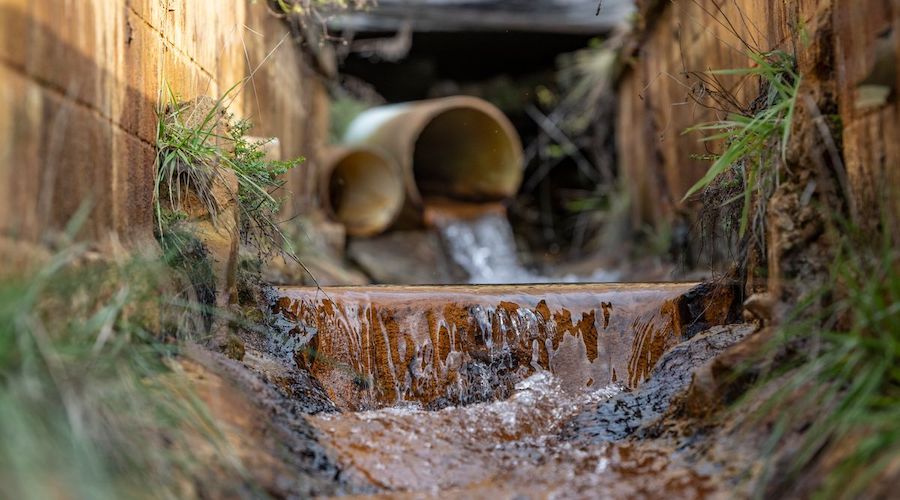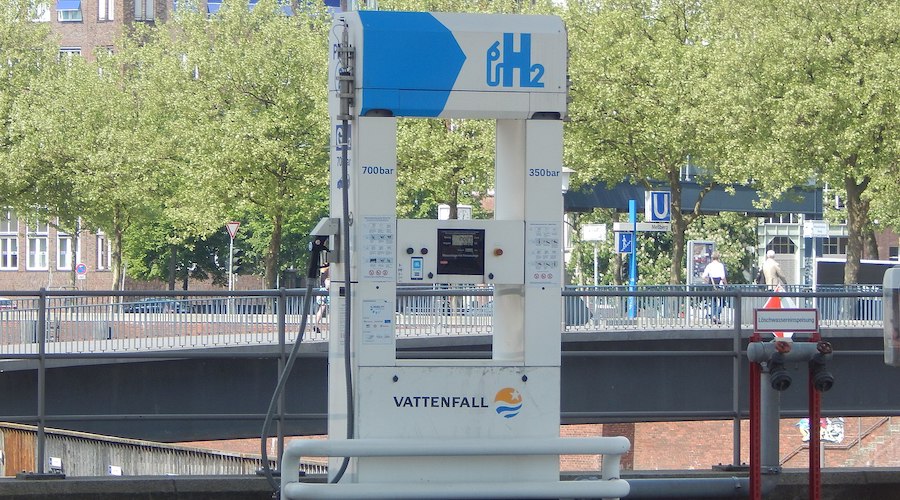Technology to extract REE from acid mine drainage gets $8m from US government
Staff Writer | April 6, 2023 |

Acid mine drainage at the Richard Mine site on lower Deckers Creek. (Image by Brian Persinger, courtesy of West Virginia University).
A technology developed by West Virginia University that aims to extract and separate rare earth elements and critical minerals from acid mine drainage and coal waste, will receive $8 million in new funding from the US Department of Energy.

The grant, part of President Joe Biden’s Investing in America agenda, will lead to the design, construction and operation of a pre-commercial demonstration facility where the solution will be put to work.
According to university authorities, the plant and technology are expected to not only address environmental issues but also create employment in regions of West Virginia impacted by the United States’ transition away from fossil fuels.
“Using AMD as a feedstock has several community and environmental advantages,” lead researcher Paul Ziemkiewicz said in a media statement. “These are already permitted sites, which facilitates the move to production, and exploration is easy: just sample the site’s AMD discharges. Also, we’re not opening a new mine or disturbing a lot of ground, and we don’t produce radioactive byproducts like most conventional rare earth mines.”
Ziemkiewicz explained that acid mine drainage provides rare earths in a form that is easily recovered, which means no rock grinding nor intensive processing is needed.
“As a result, our carbon footprint is much less than that of a conventional mining and milling operation,” he said. “Our main byproduct is clean water since our process separately recovers the rare earths and all the other metals from AMD.”
Ziemkiewicz and his team have selected several candidate sites in West Virginia for this facility and have initiated engagement with a broad range of stakeholders including state and local legislative bodies, environmental and community-based economic development groups, AMD-treatment operators, trade unions and technology providers.
They project that the facility will produce between 5.4% and 7.3% of the global requirements for terbium and dysprosium, two of the most sought-after and critical REEs. He and his colleagues have studied and refined the process since 2016 in collaboration with the Department of Energy.
“These previous efforts culminated in a technology package suitable for demonstration-scale deployment as well as an innovation ecosystem and research infrastructure, which will be leveraged for this project,” the scientist said.
Ziemkiewicz also noted that over 60% of the rare earths in AMD are neodymium, praseodymium and the heavy REEs that are most utilized in green energy and defence technologies. That number far surpasses the 12% HREE produced at typical REE mines.
Operational pilot plant
The West Virginia University’s work is already making an impact as Ziemkiewicz’s group has joined forces with the state Department of Environmental Protection to construct an AMD/REE pilot plant near Mount Storm. That facility can treat up to 500 gallons per minute of acid mine drainage from an adjacent coal property while producing nearly two tons per year of REEs and critical minerals in the form of mixed oxides.
The Mount Storm site is online producing compliant discharge water and, as of September 2022, the system began production of hydraulic pre-concentrate.
“Unlike most academic research, our team has focused on developing large-scale, continuous operations that with this new funding can move the technology rapidly toward the market,” Ziemkiewicz said. “This has meant developing private and public sector partnerships with Rockwell Automation, L3Eng, SNF Chemicals, Solmax, Endress and Hauser as well as the West Virginia DEP. Without their technologies and real-world expertise, we’d still be working at the laboratory scale.”












